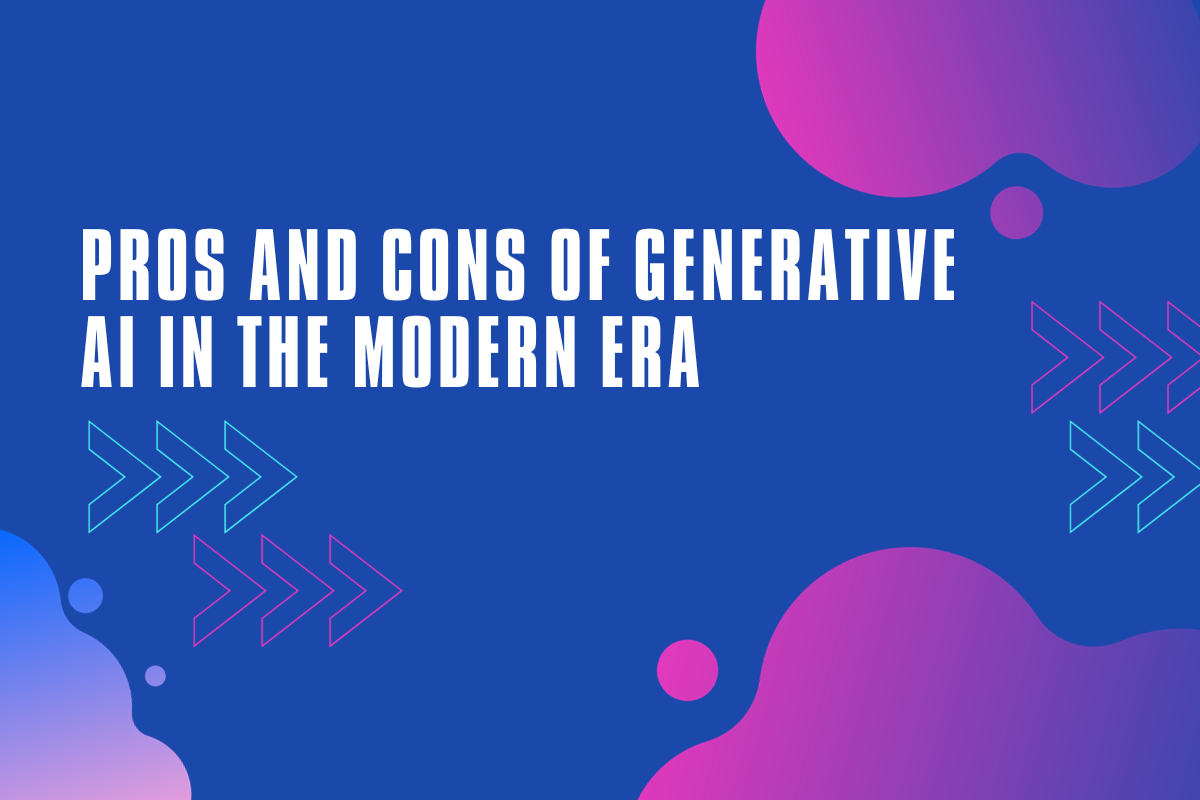Generative AI is making significant strides in the tech world, with McKinsey’s research highlighting its potential to add between US$2.6 to US$4.4 trillion annually to various industries. This remarkable growth stems from its ability to create new, original content, setting it apart from traditional AI applications. As we explore this topic, we’ll look closely at both the upsides and the challenges of the technology.
Table of Contents
ToggleUnderstanding Generative AI in Business
Generative AI, at its core, is a class of artificial intelligence that excels in creating new and original data outputs. This capability ranges from generating realistic images and text to synthesizing music or even developing new product designs. In a business context, this technology is not just a tool for innovation but a catalyst for transformation. A report by LTIMindtree highlights how leaders in the field use it to improve customer experience (81%), optimize processes (68%), enhance product design and innovation (57%), and bolster data and analytics (49%).
For businesses, the practical applications of Generative AI applications are vast. Marketing teams, for instance, can leverage it to produce unique and engaging content, tailored to specific audiences, at an unprecedented scale. This not only enhances customer engagement but also streamlines the content creation process, making it more efficient and cost-effective. Meanwhile, in product development, Gen AI can speed up the design process by rapidly prototyping new ideas, enabling businesses to explore a wider range of possibilities before settling on a final design.
Moreover, the technology has the potential to revolutionize customer service by generating personalized responses to customer queries, based on understanding and mimicking natural language. This not only improves the customer experience but also reduces the workload on human agents.
However, while the business advantages of Gen AI are evident, it’s crucial to strategically approach its integration. Adopting the new technology into business operations demands meticulous planning to ensure that its application not only aligns with overarching business goals but also addresses the advantages and disadvantages of Generative AI. By taking this balanced approach, companies can fully leverage the capabilities of AI, fostering innovation and maintaining a competitive edge.
Also Read: 10 Best AI Tools For YouTube
What are the Pros and Cons of Generative AI for Business?
Gen AI Implementation Advantages
Generative AI significantly enhances product design and innovation. Its rapid prototyping and testing capabilities shorten development cycles, offering a competitive advantage in market responsiveness. Personalized product offerings, tailored through AI’s analysis of customer data and market trends, ensure relevance and appeal. Additionally, its predictive maintenance optimizes operations, reducing downtime and improving efficiency.
In customer experience, Gen AI brings hyper-targeted marketing and content, making interactions more relevant and engaging. Chatbots and virtual assistants, powered by natural language processing, provide personalized, round-the-clock customer support, enhancing satisfaction and loyalty.
For risk management, Generative AI’s predictive analytics enable businesses to anticipate and mitigate risks effectively. It supports informed scenario planning and decision-making, crucial in navigating market uncertainties. Furthermore, its role in financial forecasting and resource allocation helps optimize asset utilization and reduce financial risks, demonstrating its value as a strategic business tool.
Also Read: 10 AI Tools Of 2024 For Business And Productivity
Disadvantages of Gen AI for Business Operations
A primary concern in the implementation of Generative AI in business is the risk of model reliability. This is exemplified by the “hallucination” issue, where LLM models can sometimes generate incorrect or nonsensical outputs. It has been estimated that the hallucination rate for models like ChatGPT is around 15% to 20%. For businesses, this can translate into critical errors in decision-making, leading to potential financial losses and damage to reputation.
Another major disadvantage is the heightened risk to security and privacy. The use of AI models, especially in handling sensitive data, opens up avenues for data breaches and unauthorized access. This vulnerability is a serious concern for any business dealing with confidential information, as it poses risks to both customer trust and legal compliance.
Data quality and availability also pose a challenge. Generative AI relies on large volumes of high-quality data to function effectively. However, not all data available to a business may be relevant or of sufficient quality for AI training, leading to inefficiencies or inaccuracies in output. Additionally, the algorithms’ dependency on extensive data sets can make them prone to biases, further compromising the fairness and reliability of their applications. These drawbacks highlight the complexities and potential risks involved in adopting Gen AI within business contexts.
Also Read: 5 Best Intelligent Document Processing Systems of 2024
Optimizing Generative AI: Strategies for Maximizing Benefits and Minimizing Risks
After examining the pros and cons of Generative AI, it’s important to focus on managing the threats while gaining maximum ROI. Here are some strategies to help achieve this balance:
- Strengthen security protocols. Robust encryption methods and secure data storage practices are critical. Regular updates to these protocols ensure the protection of sensitive data against evolving cyber threats.
- Implement a control layer. To counter the ‘hallucination’ risk in AI outputs, a control layer is necessary. It checks responses for accuracy, adding context during interactions, thus reducing errors.
- Develop regulatory frameworks. Establishing comprehensive regulations that cover privacy, data protection, and accountability is crucial. This involves collaboration between policymakers, industry experts, and AI researchers.
- Maintain human oversight. Balancing AI automation with human expertise is essential, particularly in validating AI-generated recommendations and decision-making, ensuring accuracy and mitigating risks.
- Promote transparency and validation. Transparency in AI processes is vital. Organizations should communicate any uncertainties in LLM responses and allow users to validate the information provided.
For expert assistance in developing custom Generative AI solutions, partnering with a Generative AI development company is beneficial. Such partnerships guide in understanding the pros and cons of generative artificial intelligence and help in creating the best applications suited for specific business needs.
Conclusion
Generative AI presents a dual-edged sword for businesses, blending immense potential with notable challenges. Its capacity to revolutionize content creation and enhance customer experiences is balanced against risks in model reliability, data security, and quality. Managing these challenges necessitates a strategic focus on security, compliance, and oversight.
Adopting measures like control layers and regulatory frameworks is crucial for mitigating risks. This careful approach, coupled with the expertise of an AI company, can guide businesses in harnessing Gen AI’s benefits while addressing its drawbacks, ensuring a balanced and effective integration into their operations.
Interesting Reads:








